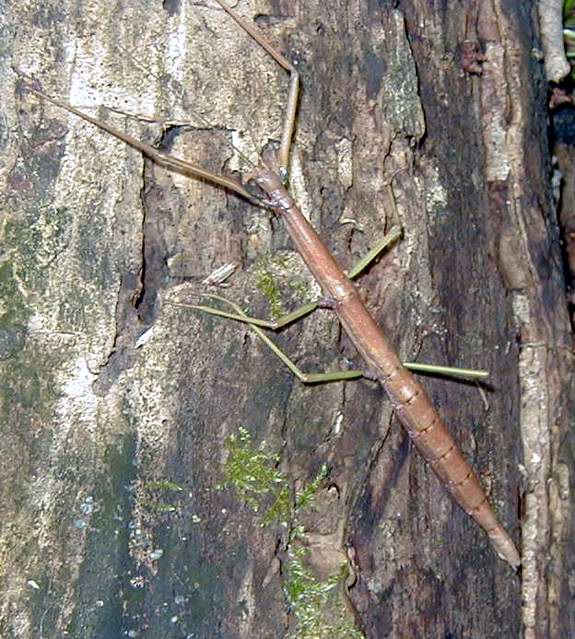|
Common Name: Northern Walkingstick Scientific Name: Diapheromera femorata Order: Phasmatidae (Latin phasma meaning "ghost" due to camouflage ability) The walkingstick is one of the best examples of mimicry in the phylum Arthropoda (insects). In spite of its camouflage, it is frequently encountered along mountain trails. Potpourri: The walkingstick uses its ability to mimic its environment to the extent that it not only looks like a stick, but it has a built in system to compensate for the movement of leaves due to wind to make its own body sway in harmony. The camouflage ability extends to changing its color to match its environment (like chameleons and squids). The color change is due to chromatophores, which are skin cells that act under hormonal control. The outer portion of the cells is a nonmobile yellow-green under which are red and black pigments that disperse to change the color. The walkingstick has the ability to rapidly regenerate legs lost to predators. The genus and species names reflect this as "diaphanous" means vague or indistinct and femorata is derived from femur, which is also the name of the large thigh leg bone in many animals. There are about 2,000 species of walkingsticks worldwide, mostly in the tropics. Only 8 live in North America, where they can be a problem in defoliating oak trees. |
